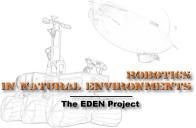|
Crossing a wide open area can be achieved on the basis of a simple
reactive "avoid obstacles" loop, whereas traversing a rough and
dangerous area requires slowest speeds, finer terrain modeling and
finer motion execution control for instance. The rover must therefore
be able to choose among a set of various navigation modes (see the introduction on rovers nagivation and [Lacroix 1994, Chatila 1997]).
The definition and the number of these modes
depend on the rover mechanical structure and on the kind of terrains
he might encounter during its missions.
As a consequence, we have developped a bunch of different algorithms:
All these algorithms are integrated within a modular, evolutive
architecture [Lacroix 2002], and controlled
according to the context thanks to
navigation strategies.
|
[Lacroix 2002]
| [related pages] [abstract] [download] [BibTeX] [top] |
|
S. Lacroix, A. Mallet, D. Bonnafous, G. Bauzil, S. Fleury, M. Herrb and R. Chatila. Autonomous Rover Navigation on Unknown Terrains: Functions
and Integration. In International Journal of Robotics Research, 21(10-11), pages 917-942, 2002.
|
| |
General Information
Robots
Rovers Navigation
Autonomous Blimps
Multi-Robot Cooperation
|


